
Kanjini News
Posted 3rd October 2017
Controlled Burning on Kanjini Land - May 2017
Our Adler Hill properties are predominantly eucalyptus forest and as such fire country.
When we first bought the property we were approached in 2013 by
Queensland Parks and Wildlife asking for permission to conduct
controlled burns on our land.
They explained that we have what is called "Tall Forest" high up in
the escarpment on our land and that this is an extremely rare biota,
rarer than rainforest. There
are really big eucalyptus trees and rose-gums and lemon-scented gums.
This forest is in danger of being invaded by rainforest plants.
This forest is also home to dozens of different fungi which form
symbiotic relationships with various eucalyptus trees. Those
truffle-like fungi are the favourite food for the northern bettong, a
small endangered marsupial. Apparently our property is in the middle of
its last major habitat.
We were told that that forest would need to be burned every few years
and that can only happen late in the year, when it is dry enough.
However before that high country can be burned later in the year, an
effective fire-break has to be burned along the lower escarpment, which
needs to be done in late autumn, soon after the wet season.
We thought that is a pretty good argument and allowed parks and
wildlife to conduct controlled burns on our land. We also welcomed them
burning some of those areas which have not been burned for many years
as the land has not really been managed, but has been in the hand of
investors for about 25 years before we bought it.
On the other side of the debate about burning or not burning we were
told by members of local green groups that fires might kill animals and
small eucalypt saplings and that it might be best to not burn at all
and let nature alone. Repeated fires, especially if they are hot, can weaken and kill large old trees.
From the experience of one of our members if fire can be excluded
from an are for 20-50 years, it will return to rainforest, providing it
receives enough rainfall. However in the meantime it will accumulate a
lot of dead wood and grass. Here in FNQ, fires are nowhere near as
dangerous as they can be down south, however we have witnessed some late season
fires in the area which got pretty hot, almost turned into crown fires, and threatened properties and people.
So both for fuel reduction, conservation and environmental reasons we
are happy that parks and wildlife and our local rural fire brigades
conduct fire management on our large property.
What we want to work towards is to establish areas on our land which
we will defend from fires, including buildings, farmland and some
patches of rainforest we intend to create.
We intend to surround those with areas which we regularly burn to
create effective fire-breaks and reduce fuel loads. and then outside of
that we can create some areas which we leave to nature and some where
we practice mosaic fire management.
This year we have introduced some new practices and are very
thankful that parks and wildlife and our local rural fire brigade have
implemented those. The first one is to burn as early as possible, to
create a very patchy burn and then come back later to burn those areas
which were too wet during the first burn, so there is still an
effective fire-break for the main burn in the tall forest later in the
year. In fact they have already done three lots of burns, which is a
lot more work for them, but it should significantly benefit small
animals and result in a much more patchy and cooler burn. While last
time around the fire-break for the late season burn high in the
escarpment was established in a single burn, this time it was done in
three burns, giving wildlife a much better chance to survive.
The other practice we asked for is that they burn one are surrounded by
fire-break tracks only from one side (against the wind), rather than
from all around as is the usual practice. This avoids animals being
caught in the middle.
Have a look at the pictures below and some explainations!
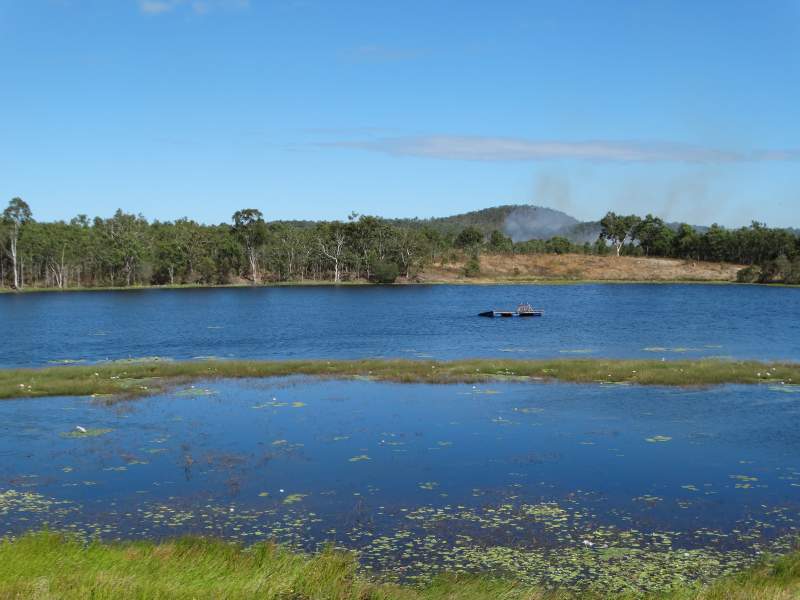 11:30 (half hour after lighting the fire) |
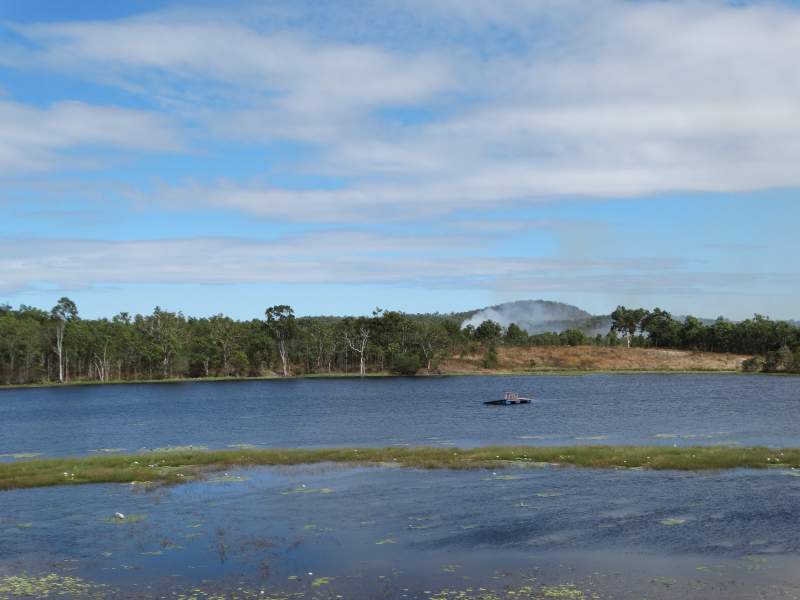 12:00 (burning slowly from right to left against the wind) |
These five images were all taken on the same day and show a controlled burn of about 100 acres in very early June 2017. This area would not have been burned for decades, so there was a very high fuel load. Burning as early as the weather allowed helped keeping it a fairly cool burn. Despite the very high fuel load, in most of the area even leaves on medium size eucalypts did not burn and some patches of grass and bushes also did not burn. By nightfall the fire was all but extinguished and was easily contained by road-tracks serving as fire-breaks. Usually fires are lit all the way along the firebreak tracks created around the area to be burned as this is the safest approach. However this can result in very intense heat as fires from all around converge towards the middle of the burn area. Animals fleeing the fires might be caught and killed when the fire is lit in a big circle and then burns inward. So upon our request the local firies and Parks and Wildlife were kind enough to start the burn of the dedicated area on the off-wind side and allow it to slowly burn against the wind, giving animals plenty of time to escape and not end up encircled by fires from all sides. |
 13:00 (at its most intense as it climbes up the hill) |
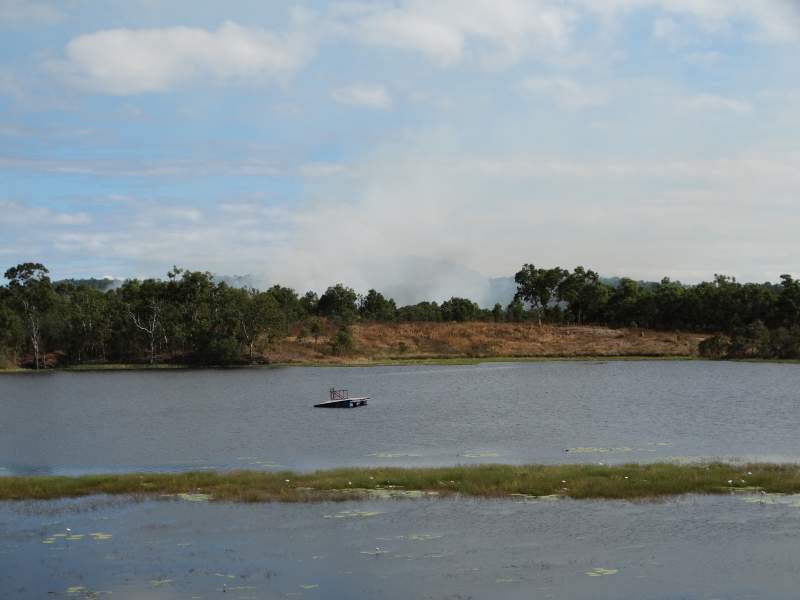 14:00 (already loosing intensity) |
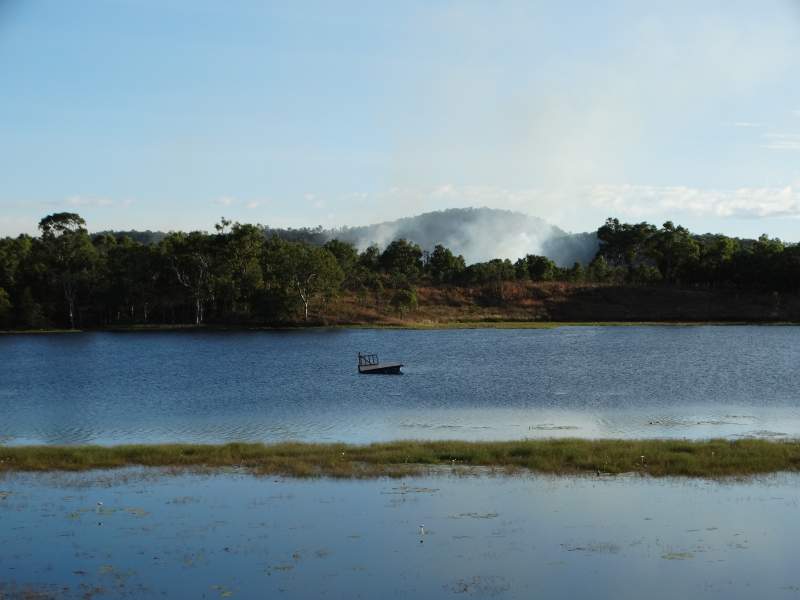 17:00 (nearly finished burning) |
And below you can see a couple of images of the third burn in the escarpment, which has been exceptionally cool, becasue done very early in the year, because it was done in three stages and because the area had been burned three years ago, all factors contributing to a low fuel load and very cool burn, which still establishes an effective fire-break (for the main burn high in the escarpment later in the year), but is much kinder to the environment. |
|
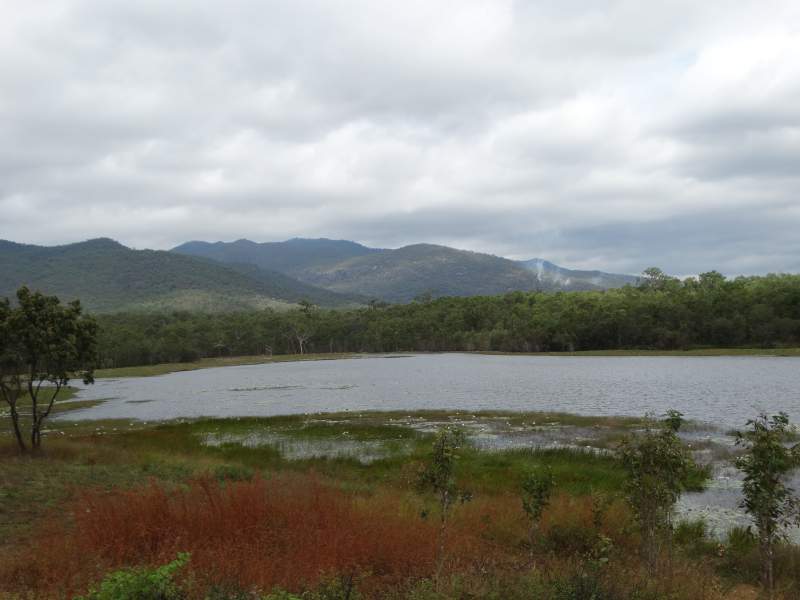 fires started in the escarpment by incendaries dropped from a helicopter |
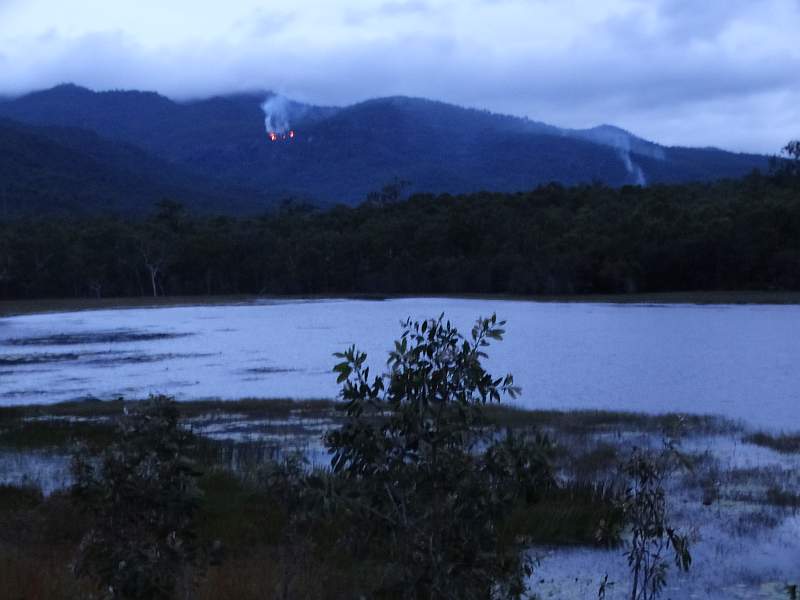 only a couple of spots are still burning at sunset |
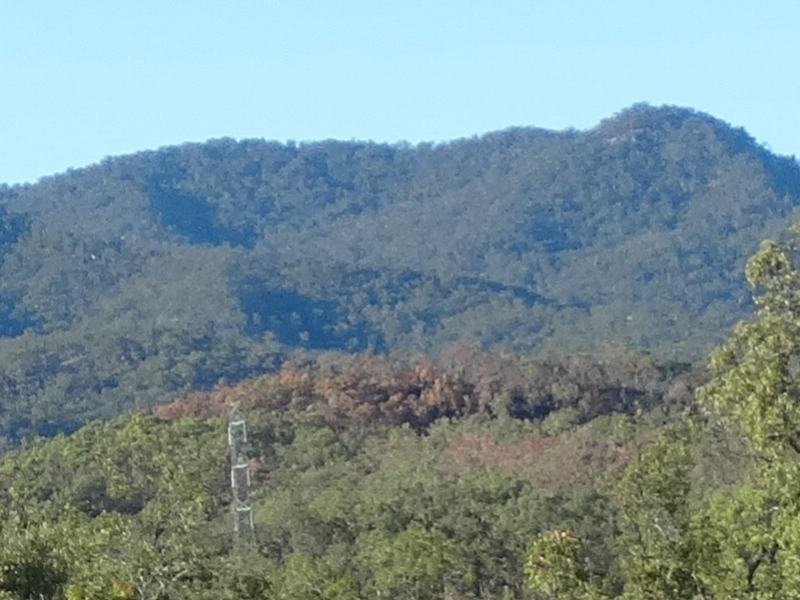 After a hot burn the crowns of trees on top of this hill have been burned
|
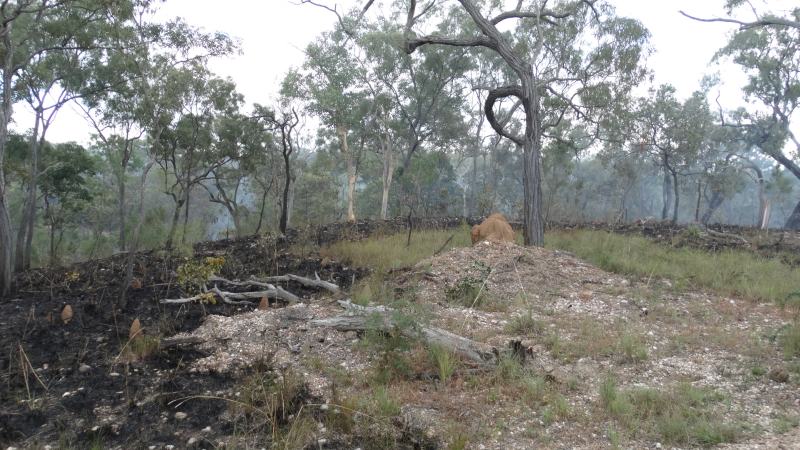 And here you can see a very
early season cool burn, also on top of a hill. Yet the leaves of the
trees are not singed and there is even a patch of unburned grass still
on top of the hill (where fires are usually the hottest), providing
refuge for any animals fleeing the flames
|
Back to News
© 2009- Kanjini.org